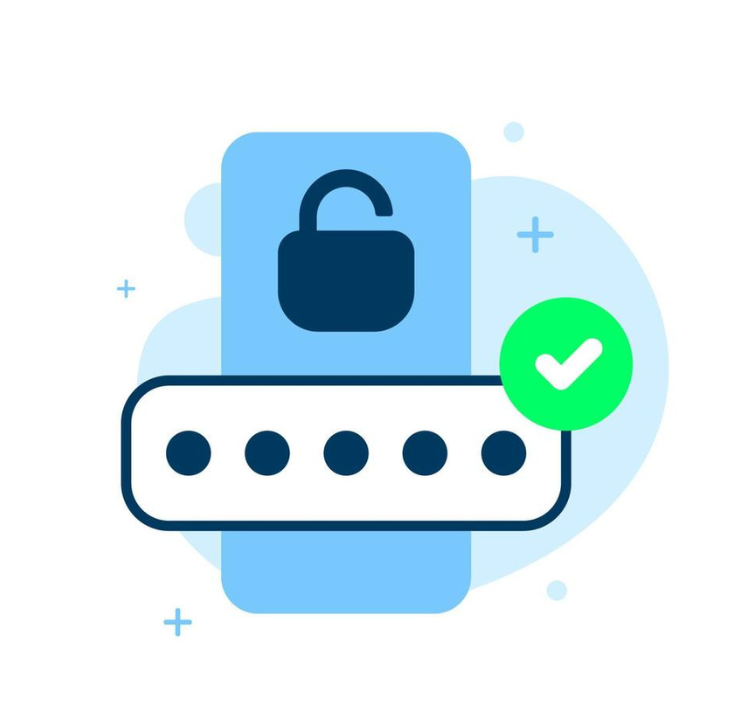
In the ever-evolving landscape of the digital world, where our lives are intricately woven with technology, the need for robust cybersecurity practices has become more critical than ever. One fundamental aspect that often gets overlooked is the regular changing of passwords. In this digital age, where cyber threats loom large, understanding the significance of consistently updating your passwords can be the key to fortifying your online security and preventing hacking incidents.
The Vulnerability of Static Passwords
Passwords serve as the first line of defense against unauthorized access to our online accounts. However, the inherent vulnerability of static passwords lies in their predictability. Many users tend to use easily guessable passwords or recycle them across multiple platforms, making it a cakewalk for cybercriminals to gain unauthorized access.
Once a hacker gains access to a password, the potential for exploitation multiplies. From personal emails to online banking and social media accounts, a compromised password can pave the way for identity theft, financial fraud, and even the spread of misinformation.
The Rapid Evolution of Cyber Threats
As technology advances, so do the strategies employed by cybercriminals. Hackers are becoming increasingly sophisticated, utilizing advanced tools and tactics to breach security systems. In such a scenario, relying on the same password for an extended period becomes a significant liability.
Cyber threats, such as phishing attacks, brute force attempts, and password-cracking techniques, are continually evolving. Regularly changing passwords is a proactive measure to stay one step ahead of potential breaches. It adds an extra layer of complexity for hackers and reduces the likelihood of successful unauthorized access.
Mitigating the Risk of Credential Stuffing
Credential stuffing is a prevalent cyber attack where hackers use automated tools to input stolen usernames and passwords across various websites, exploiting the fact that many users reuse passwords. Regularly changing passwords disrupts this cycle, making it more challenging for cybercriminals to leverage compromised credentials across multiple platforms.
By changing passwords at regular intervals, users can break the chain that links their credentials to potential security breaches. This simple yet effective measure significantly mitigates the risk of falling victim to credential-stuffing attacks.
Addressing the Human Factor in Cybersecurity
Human behavior plays a crucial role in the effectiveness of cybersecurity measures. Despite the continuous development of sophisticated security technologies, the human factor remains a potential weak link. Individuals may unintentionally compromise their passwords through actions like sharing them with others, writing them down in easily accessible locations, or falling prey to phishing scams.
Regularly changing passwords serves as a behavioral cue, reminding users to stay vigilant and actively participate in their cybersecurity. This practice instills a sense of responsibility, making individuals more mindful of their online habits and reducing the likelihood of succumbing to social engineering tactics employed by cybercriminals.
Find your nearest Digimob Mobile Repair location https://digimob.com.au and connect with a team member to promptly resolve any damage issues.
Compliance with Industry Standards and Regulations
In various industries, compliance with cybersecurity standards and regulations is not merely a best practice but a legal requirement. Many regulatory frameworks mandate the implementation of robust security measures, including regularly updating passwords, to protect sensitive information and ensure data privacy.
For instance, the Payment Card Industry Data Security Standard (PCI DSS) requires organizations handling payment card information to implement stringent security measures, including the regular changing of passwords. Non-compliance exposes businesses to potential data breaches, legal repercussions, and financial penalties.
The Role of Multi-Factor Authentication
While changing passwords is an essential practice, combining it with multi-factor authentication (MFA) further enhances the overall security posture. MFA adds an extra layer of verification beyond passwords, requiring users to provide additional information, such as a unique code sent to their mobile device.
By implementing MFA, even if a password is compromised, unauthorized access remains thwarted without the secondary authentication factor. Regularly changing passwords complements MFA, creating a dynamic and robust defense against cyber threats.
Practical Tips for Implementing Regular Password Changes
- Set Reminders: Establish a routine for changing passwords by setting regular reminders. This could be a monthly or quarterly practice, depending on the sensitivity of the accounts.
- Use Strong and Unique Passwords: Ensure that new passwords are complex, incorporating a mix of uppercase and lowercase letters, numbers, and special characters. Avoid easily guessable information, such as birthdays or names.
- Utilize Password Managers: Implementing a reliable password manager can streamline the process of generating and storing complex passwords. These tools help users maintain a secure and diverse set of passwords for various accounts.
- Educate and Train Users: Organizations should conduct regular cybersecurity awareness training to educate users on the importance of password hygiene. This includes the significance of changing passwords and recognizing phishing attempts.
- Monitor Account Activity: Regularly monitor account activity for any suspicious behavior or unauthorized access. Implementing account monitoring tools can provide early detection of potential security incidents.

Conclusion
In the digital age, where our lives are intricately connected to the online realm, the importance of regularly changing passwords cannot be overstated. It is a simple yet effective measure to bolster security, mitigate the risk of cyber threats, and stay ahead of evolving hacking techniques.
By understanding the vulnerability of static passwords, addressing the human factor in cybersecurity, and complying with industry standards, individuals and organizations can create a robust defense against unauthorized access and potential data breaches. Combined with multi-factor authentication and practical implementation tips, regularly changing passwords emerges as a cornerstone in the quest for a secure digital future. Embracing this practice is not just a proactive security measure; it’s a commitment to safeguarding our digital identities and maintaining control over our online lives.



